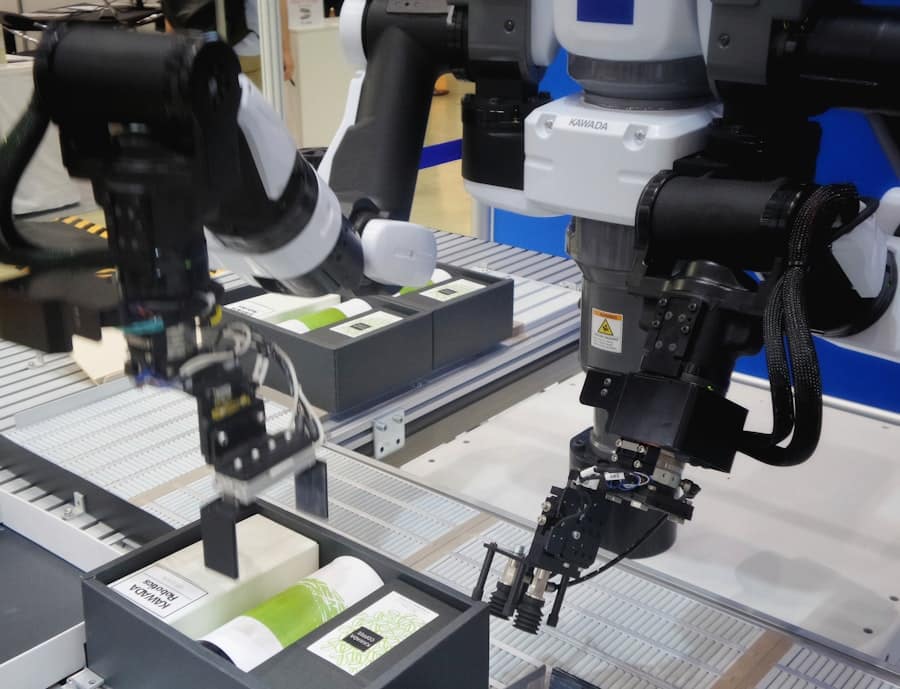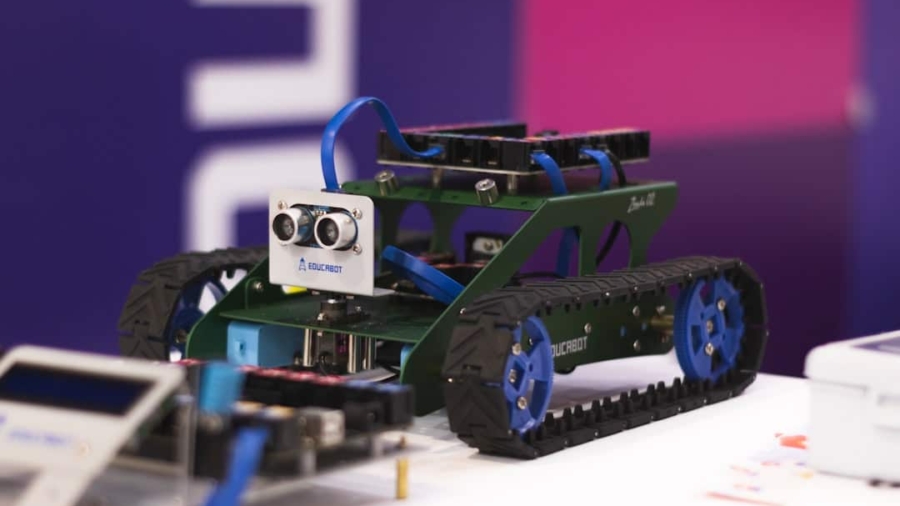The integration of robotics into elderly care represents a transformative shift in how society approaches the challenges associated with aging populations. As the demographic landscape evolves, with a significant increase in the number of older adults, the demand for innovative solutions to enhance their quality of life has never been more pressing. Robotics, encompassing a range of technologies from simple assistive devices to complex autonomous systems, offers promising avenues for addressing the multifaceted needs of seniors.
These technologies not only aim to improve physical health and safety but also seek to enrich emotional well-being and social engagement. Robotic systems designed for elderly care can take various forms, including robotic companions, mobility aids, and telehealth solutions. Each of these innovations is tailored to meet specific needs, such as enhancing mobility, ensuring medication adherence, or providing companionship.
The potential benefits of these technologies are vast, ranging from increased independence for seniors to reduced strain on caregivers and healthcare systems. As we delve deeper into the various applications of robotics in elderly care, it becomes evident that these advancements are not merely about technology for technology’s sake; they represent a holistic approach to improving the lives of older adults.
Key Takeaways
- Robotics in elderly care offers innovative solutions to address the growing needs of an aging population.
- Mobility assistance and fall prevention robots provide crucial support in maintaining independence and reducing the risk of accidents for elderly individuals.
- Medication management and health monitoring robots help ensure proper medication adherence and timely health assessments for seniors.
- Social interaction and companionship robots offer emotional support and reduce feelings of loneliness and isolation among the elderly.
- Cognitive stimulation and mental health support robots contribute to the overall well-being of seniors by providing engaging activities and personalized mental health care.
Mobility Assistance and Fall Prevention
One of the most critical areas where robotics can make a significant impact is in mobility assistance and fall prevention. Falls are a leading cause of injury among older adults, often resulting in severe consequences such as fractures, hospitalizations, and even mortality.
For instance, robotic exoskeletons can provide physical support to individuals with limited mobility, allowing them to stand and walk with greater ease. These devices are equipped with sensors that detect the user’s movements and adjust accordingly, offering real-time assistance. In addition to exoskeletons, robotic systems like smart walkers incorporate advanced technologies such as artificial intelligence and machine learning to adapt to the user’s gait and environment.
These walkers can detect changes in terrain or obstacles and provide feedback or assistance to help prevent falls. Moreover, some models are equipped with emergency alert systems that can notify caregivers or emergency services if a fall occurs. By integrating these technologies into daily life, older adults can maintain their independence while significantly reducing the risks associated with mobility challenges.
Medication Management and Health Monitoring

Another vital application of robotics in elderly care is medication management and health monitoring. Adherence to prescribed medication regimens is crucial for managing chronic conditions common among older adults, yet studies indicate that non-adherence rates can be alarmingly high. Robotic medication dispensers are emerging as effective solutions to this problem.
These devices can organize medications by dosage and time, providing reminders and alerts when it’s time for seniors to take their medications. Some advanced models even feature automated dispensing mechanisms that ensure the correct dosage is delivered at the right time. In addition to medication management, health monitoring robots can track vital signs such as heart rate, blood pressure, and glucose levels.
These robots can be integrated into telehealth platforms, allowing healthcare providers to monitor patients remotely. For example, a robot equipped with sensors can collect data on a patient’s health status and transmit it to their healthcare provider in real-time. This continuous monitoring enables timely interventions when health issues arise, ultimately leading to better health outcomes for seniors.
The combination of medication management and health monitoring through robotics not only enhances adherence but also empowers older adults to take an active role in managing their health.
Social Interaction and Companionship
The emotional well-being of older adults is profoundly influenced by their social interactions and sense of companionship. Loneliness and social isolation are prevalent issues among seniors, often leading to negative health outcomes such as depression and cognitive decline. Robotics offers innovative solutions to combat these challenges through the development of social robots designed specifically for companionship.
These robots can engage in conversation, play games, and even provide reminders for social activities or family visits. One notable example is the use of robotic pets, such as Aibo or Paro, which have been shown to provide comfort and companionship to seniors. These robotic animals respond to touch and voice commands, creating an interactive experience that mimics the companionship of a real pet without the associated responsibilities.
Research has demonstrated that interactions with robotic pets can reduce feelings of loneliness and improve mood among older adults. Furthermore, social robots equipped with artificial intelligence can learn from their interactions with users, adapting their responses over time to better meet individual preferences and needs.
Cognitive Stimulation and Mental Health Support
Cognitive decline is a significant concern for many older adults, with conditions such as dementia and Alzheimer’s disease affecting millions worldwide. Robotics can play a crucial role in providing cognitive stimulation and mental health support through interactive games and activities designed to engage seniors’ minds.
For instance, robots like ElliQ are designed to encourage seniors to participate in cognitive activities by suggesting games or quizzes based on their interests. These interactions not only stimulate cognitive function but also foster a sense of accomplishment and engagement. Additionally, some robots are equipped with features that allow them to facilitate communication between seniors and their families or caregivers, further enhancing social connections that are vital for mental health.
Safety and Security Measures
Safety is a paramount concern in elderly care, particularly for those living independently. Robotics can enhance safety through various measures that monitor the environment and alert caregivers or emergency services when necessary. For example, home monitoring robots equipped with cameras and sensors can detect unusual activity or emergencies such as falls or fires.
These systems can send alerts directly to caregivers or family members, ensuring prompt responses in critical situations. Moreover, robotic systems can be integrated with smart home technologies to create a safer living environment for seniors. For instance, automated lighting systems can be programmed to illuminate pathways during nighttime hours, reducing the risk of falls in dark areas.
Additionally, robots can assist with daily tasks such as cooking or cleaning while ensuring that safety protocols are followed—such as turning off appliances when not in use or detecting gas leaks. By combining robotics with smart home technology, older adults can enjoy greater peace of mind regarding their safety.
Cost-Effective Solutions and Access to Care
As healthcare costs continue to rise globally, finding cost-effective solutions for elderly care has become increasingly important. Robotics offers potential pathways to reduce expenses associated with traditional caregiving models while improving access to care for seniors. For instance, telepresence robots enable healthcare providers to conduct remote consultations with patients, reducing the need for transportation and associated costs for both patients and providers.
Furthermore, robotic systems designed for home care can alleviate some of the burdens on professional caregivers by assisting with routine tasks such as monitoring health metrics or providing companionship. This not only allows caregivers to focus on more complex needs but also helps reduce overall staffing costs in long-term care facilities. By leveraging robotics in elderly care settings, stakeholders can create more sustainable models that prioritize both quality of care and financial viability.
Ethical Considerations and Future Implications
The rise of robotics in elderly care brings forth a host of ethical considerations that must be addressed as these technologies become more prevalent. One primary concern revolves around privacy; as robots collect data on seniors’ health and daily activities, ensuring that this information is protected from unauthorized access is paramount. Additionally, there is an ongoing debate about the extent to which robots should replace human interaction in caregiving roles.
While robots can provide valuable assistance, they cannot fully replicate the empathy and understanding that human caregivers offer. Moreover, there are implications regarding equity in access to robotic technologies. As these innovations become more integrated into healthcare systems, it is essential to ensure that all seniors have access regardless of socioeconomic status or geographic location.
Policymakers must consider how to bridge gaps in access while promoting the responsible development of robotic technologies that prioritize the well-being of older adults. As we look toward the future of robotics in elderly care, it is clear that these technologies hold immense potential for enhancing the lives of seniors. However, careful consideration must be given to ethical implications and equitable access as we navigate this evolving landscape.
The collaboration between technologists, healthcare providers, policymakers, and communities will be crucial in shaping a future where robotics serve as valuable allies in supporting the aging population while respecting their dignity and autonomy.
In the realm of technological advancements, robotics is playing a pivotal role in addressing the challenges faced in elderly care. As the global population ages, the demand for innovative solutions to support the elderly grows. Robotics offers promising avenues to enhance the quality of life for seniors, providing assistance with daily activities, health monitoring, and companionship. For those interested in exploring how technology is transforming other aspects of our lives, an article on unlocking the power of the Galaxy with the Samsung S22 Ultra delves into the cutting-edge features of this smartphone, showcasing how advancements in technology continue to revolutionize our everyday experiences.
FAQs
What is robotics in elderly care?
Robotics in elderly care refers to the use of robotic technology to assist and support the elderly in various aspects of their daily lives, including healthcare, companionship, and household tasks.
What are the challenges in elderly care that robotics is addressing?
Some of the challenges in elderly care that robotics is addressing include the need for assistance with activities of daily living, monitoring and managing chronic health conditions, providing companionship and social interaction, and addressing the shortage of caregivers.
How are robots being used in elderly care?
Robots are being used in elderly care to provide assistance with tasks such as medication reminders, mobility support, fall detection and prevention, social interaction, and monitoring of vital signs. They can also help with household chores and provide entertainment and cognitive stimulation.
What are the benefits of using robotics in elderly care?
The benefits of using robotics in elderly care include increased independence and autonomy for the elderly, improved safety and security, reduced caregiver burden, and access to round-the-clock assistance and monitoring. Robotics can also help address the shortage of caregivers and reduce healthcare costs.
What are some examples of robotic technology used in elderly care?
Examples of robotic technology used in elderly care include robotic exoskeletons for mobility support, robotic companions for social interaction, robotic pets for companionship, telepresence robots for virtual communication, and robotic devices for medication management and monitoring.


